Abstract
The interaction of complement and polymyxin with gram-negative bacteria has been investigated by using three strains of Salmonella typhimurium in an attempt to determine the loci of complement action. It has been shown that the bactericidal activities of complement and polymyxin towards a smooth gram-negative organism are similarly affected by various components of the bactericidal test system. Further, complement and polymyxin have been shown to act synergistically in the bactericidal event. Evidence is presented which suggests that each agent produces lesions in the outer membrane of gram-negative bacteria, allowing lysozyme to interact with its glycopeptide substrate. An attack on the inner cytoplasmic membrane follows, since cell respiration is rapidly inhibited and this membrane becomes sufficiently disorganized to permit massive leakage of β-galactosidase from the cytoplasm of the target cells.
Full text
PDF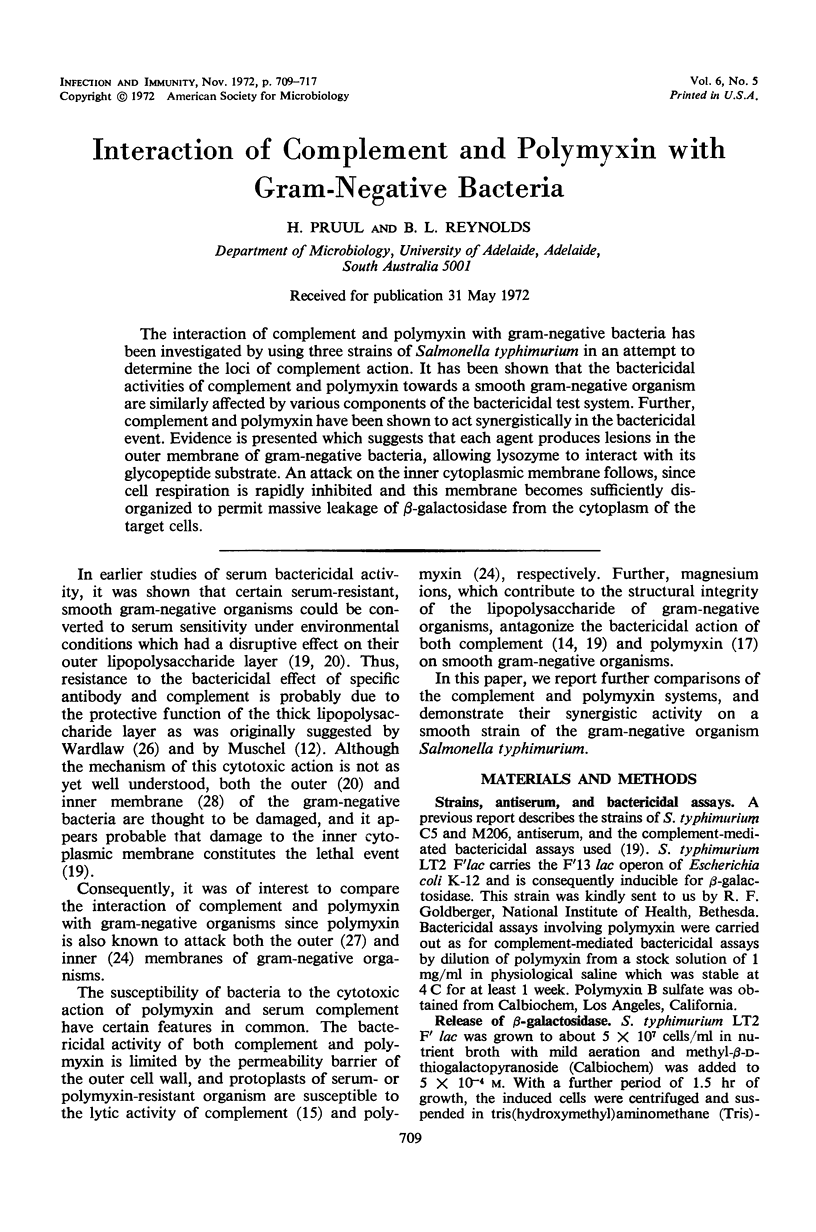
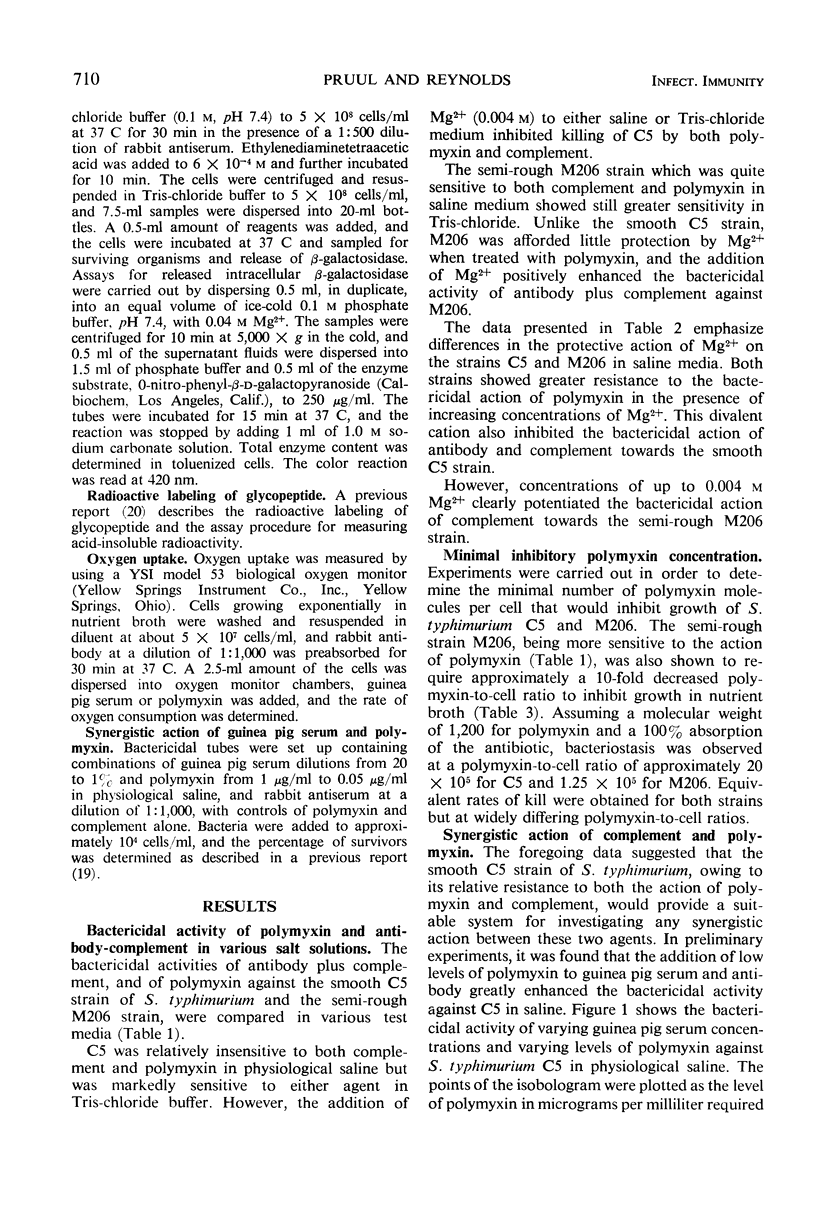
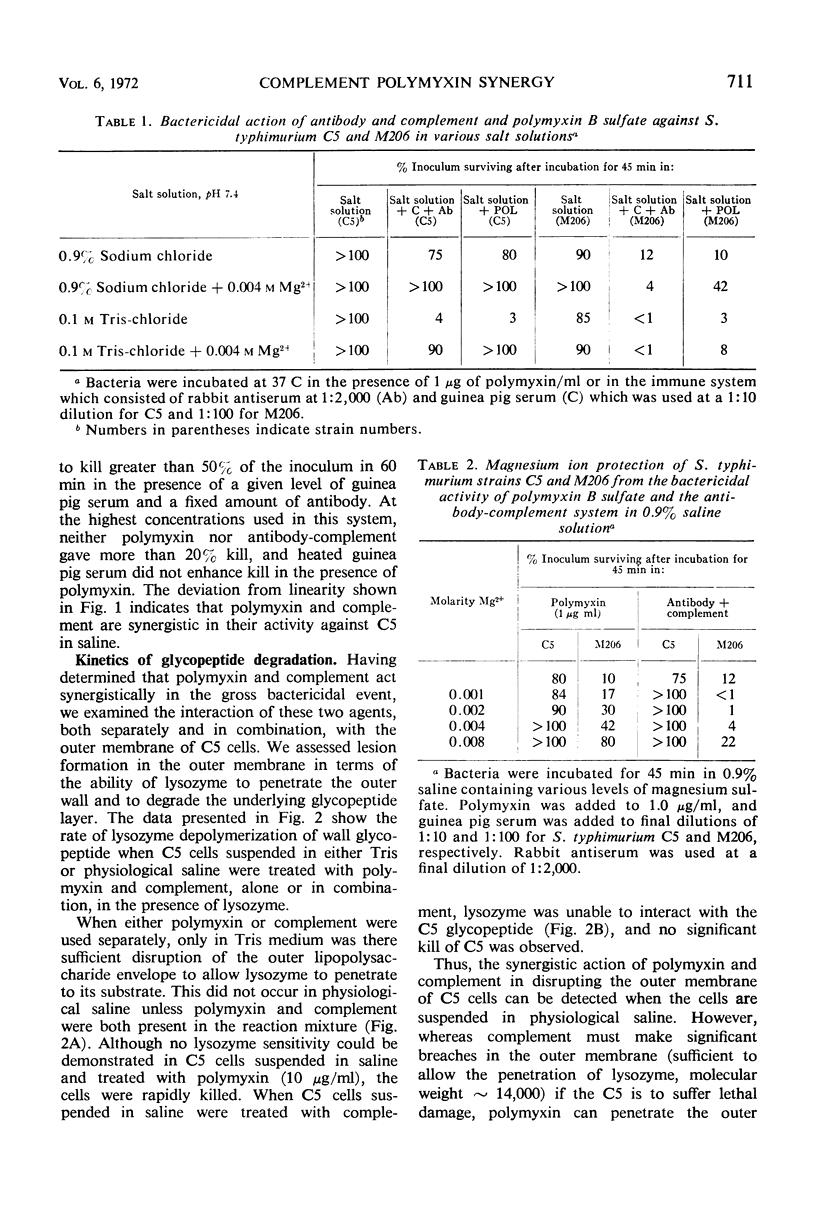
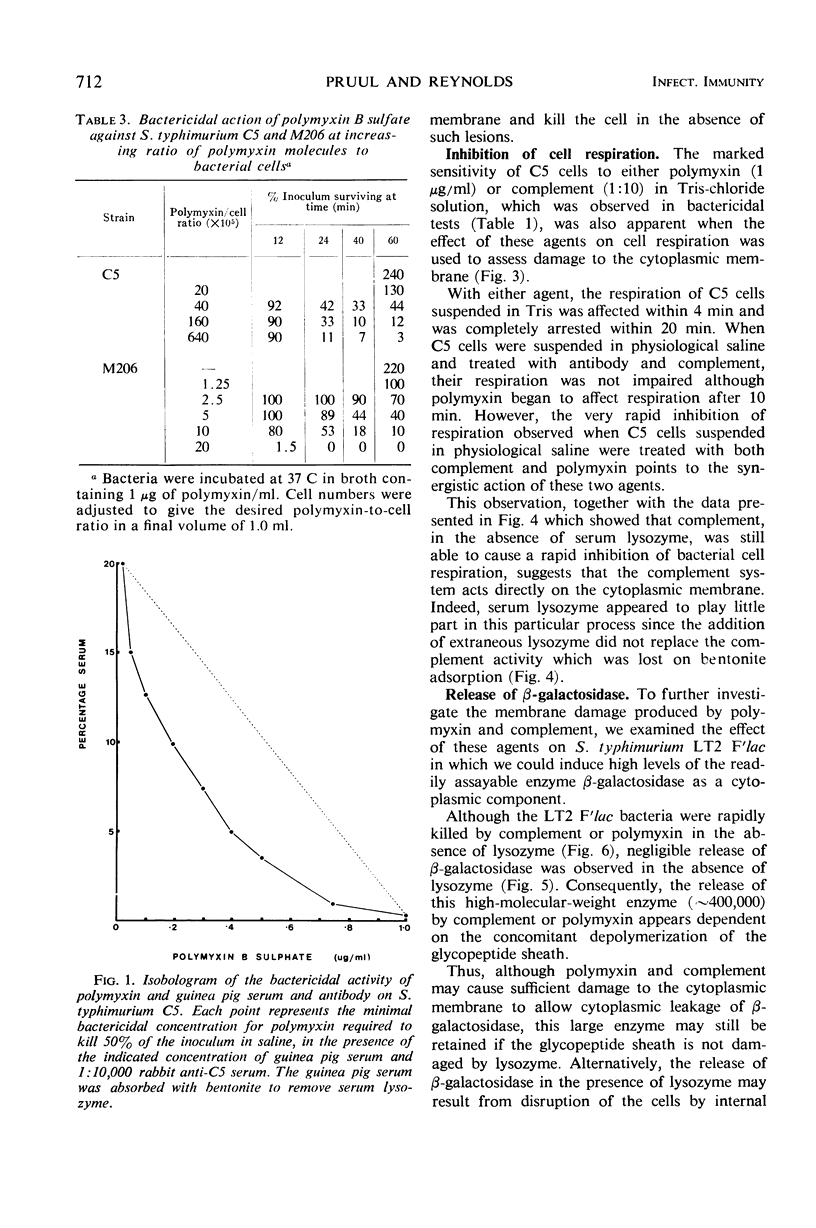
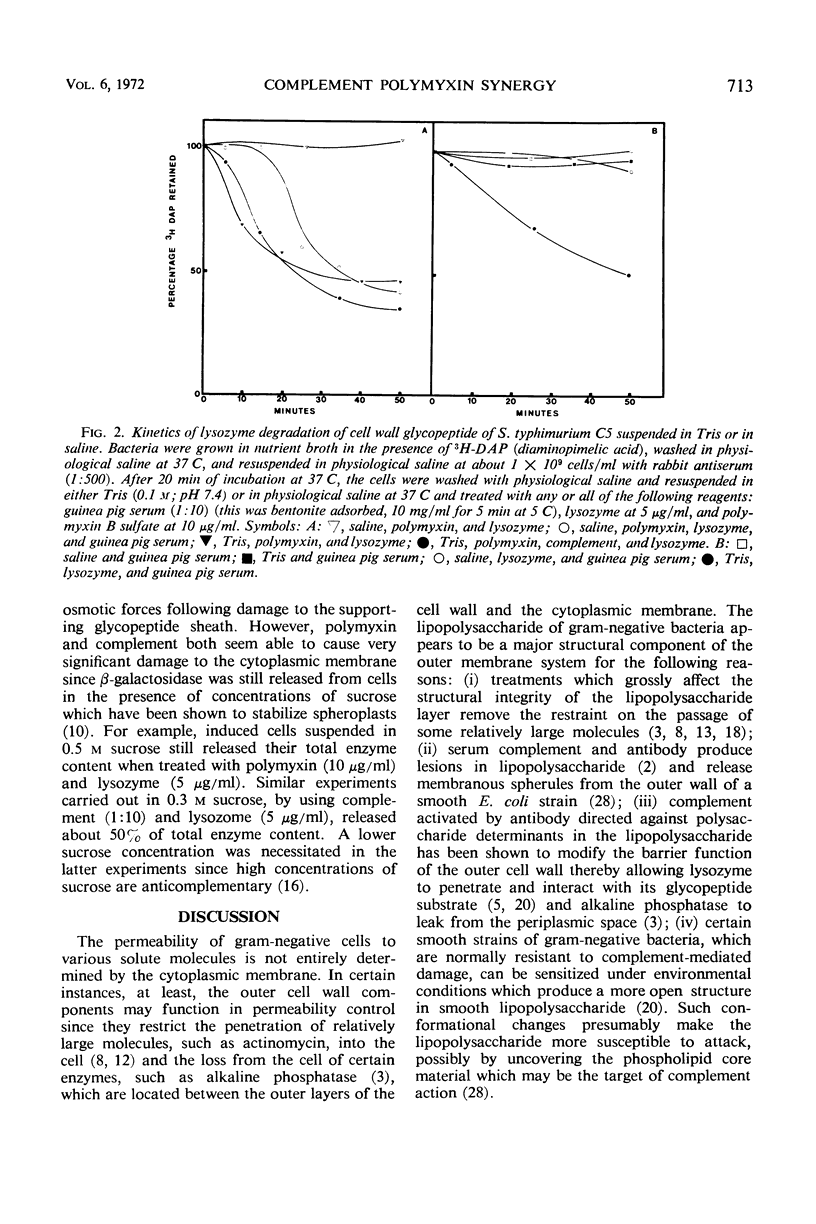
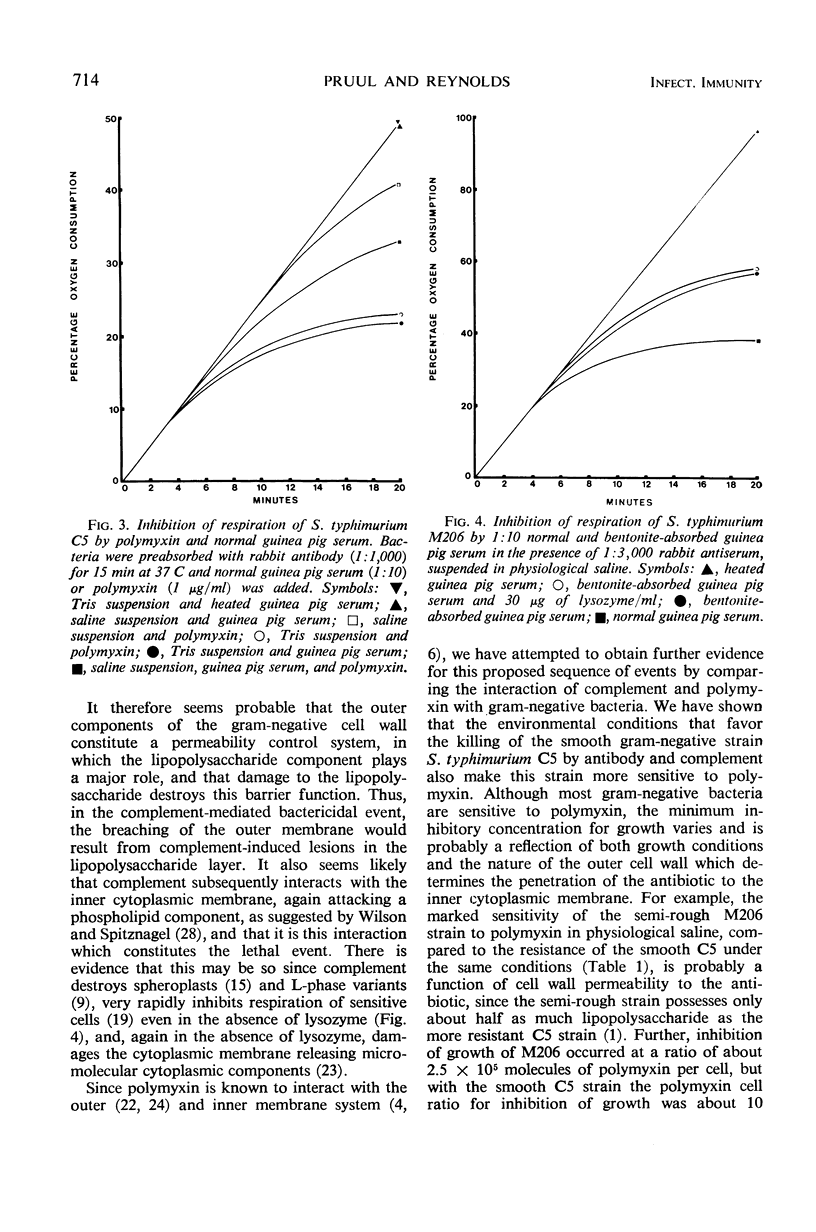
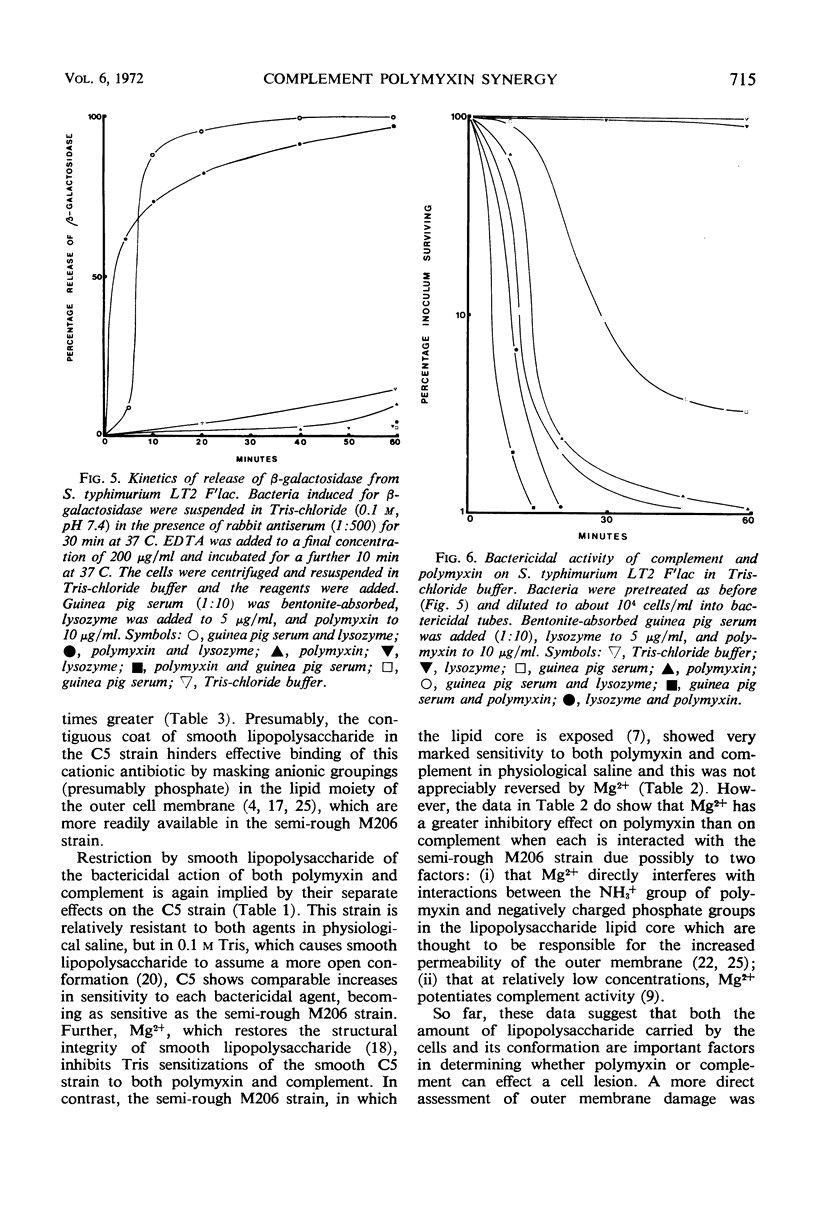
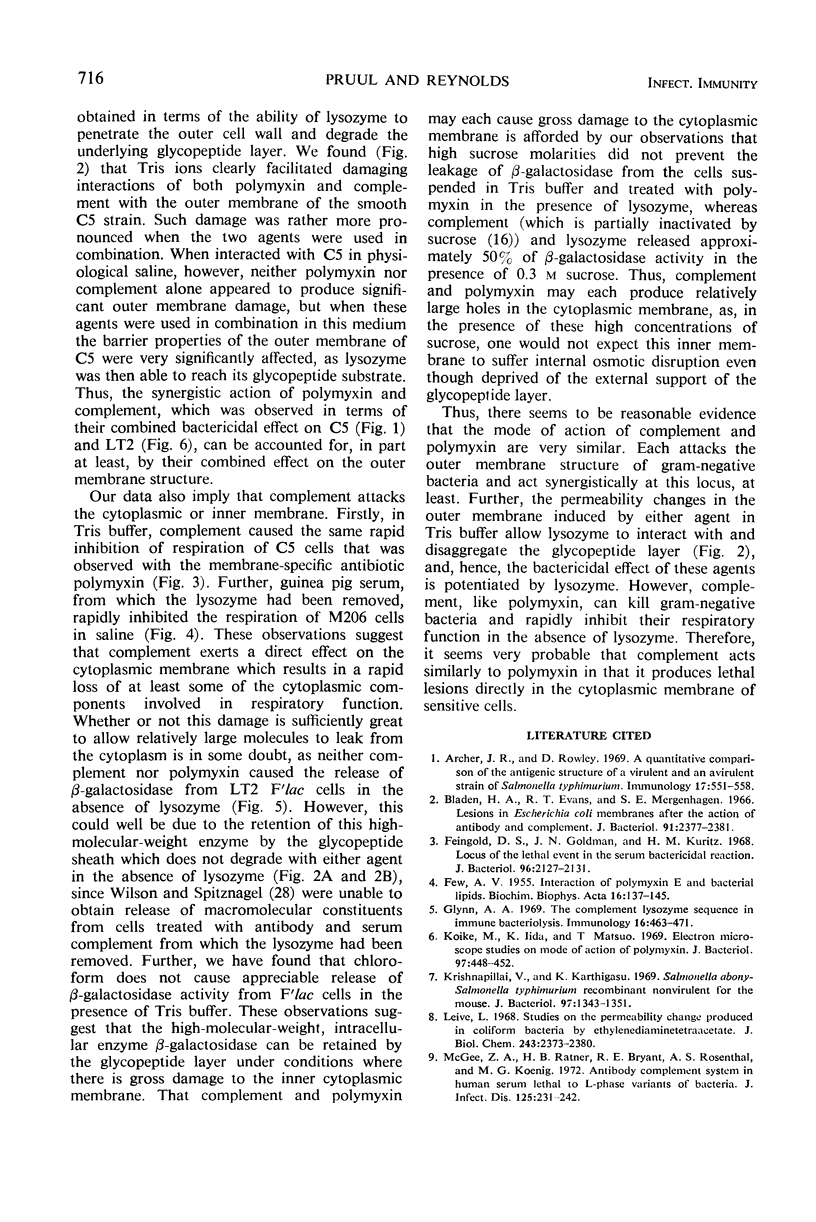
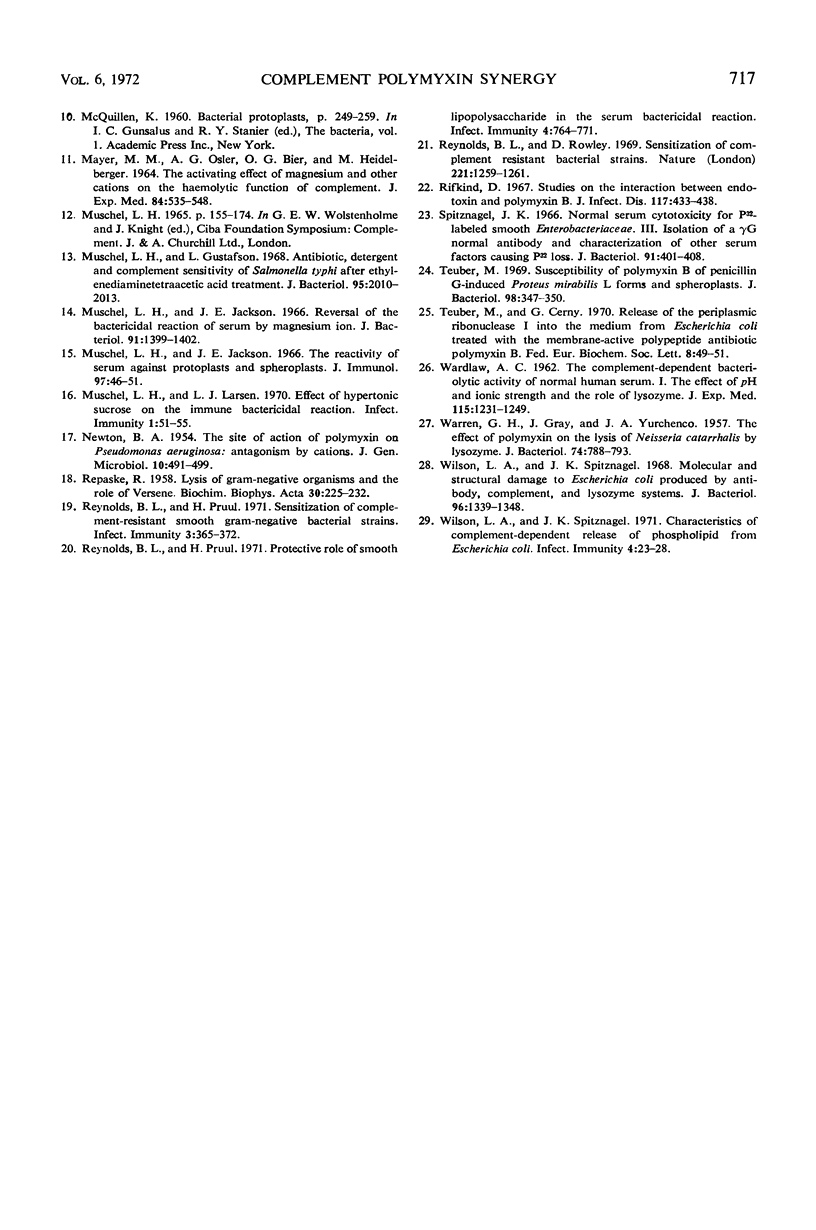
Selected References
These references are in PubMed. This may not be the complete list of references from this article.
- Archer J. R., Rowley D. A quantitative comparison of the antigenic structure of a virulent and an avirulent strain of Salmonella typhimurium. Immunology. 1969 Oct;17(4):551–558. [PMC free article] [PubMed] [Google Scholar]
- Bladen H. A., Evans R. T., Mergenhagen S. E. Lesions in Escherichia coli membranes after action of antibody and complement. J Bacteriol. 1966 Jun;91(6):2377–2381. doi: 10.1128/jb.91.6.2377-2381.1966. [DOI] [PMC free article] [PubMed] [Google Scholar]
- FEW A. V. The interaction of polymyxin E with bacterial and other lipids. Biochim Biophys Acta. 1955 Jan;16(1):137–145. doi: 10.1016/0006-3002(55)90191-8. [DOI] [PubMed] [Google Scholar]
- Feingold D. S., Goldman J. N., Kuritz H. M. Locus of the lethal event in the serum bactericidal reaction. J Bacteriol. 1968 Dec;96(6):2127–2131. doi: 10.1128/jb.96.6.2127-2131.1968. [DOI] [PMC free article] [PubMed] [Google Scholar]
- Glynn A. A. The complement lysozyme sequence in immune bacteriolysis. Immunology. 1969 Apr;16(4):463–471. [PMC free article] [PubMed] [Google Scholar]
- Koike M., Iida K., Matsuo T. Electron microscopic studies on mode of action of polymyxin. J Bacteriol. 1969 Jan;97(1):448–452. doi: 10.1128/jb.97.1.448-452.1969. [DOI] [PMC free article] [PubMed] [Google Scholar]
- Krishnapillai V., Karthigasu K. Salmonella abony-Salmonella typhimurium recombinant nonvirulent for the mouse. J Bacteriol. 1969 Mar;97(3):1343–1351. doi: 10.1128/jb.97.3.1343-1351.1969. [DOI] [PMC free article] [PubMed] [Google Scholar]
- Leive L. Studies on the permeability change produced in coliform bacteria by ethylenediaminetetraacetate. J Biol Chem. 1968 May 10;243(9):2373–2380. [PubMed] [Google Scholar]
- McGee Z. A., Ratner H. B., Bryant R. E., Rosenthal A. S., Koenig M. G. An antibody-complement system in human serum lethal to L-phase variants of bacteria. J Infect Dis. 1972 Mar;125(3):231–242. doi: 10.1093/infdis/125.3.231. [DOI] [PubMed] [Google Scholar]
- Muschel L. H., Gustafson L. Antibiotic, detergent, and complement sensitivity of Salmonella typhi after ethylenediaminetetraacetic acid treatment. J Bacteriol. 1968 Jun;95(6):2010–2013. doi: 10.1128/jb.95.6.2010-2013.1968. [DOI] [PMC free article] [PubMed] [Google Scholar]
- Muschel L. H., Jackson J. E. Reversal of the bactericidal reaction of serum by magnesium ion. J Bacteriol. 1966 Apr;91(4):1399–1402. doi: 10.1128/jb.91.4.1399-1402.1966. [DOI] [PMC free article] [PubMed] [Google Scholar]
- Muschel L. H., Jackson J. E. The reactivity of serum against protoplasts and spheroplasts. J Immunol. 1966 Jul;97(1):46–51. [PubMed] [Google Scholar]
- Muschel L. H., Larsen L. J. Effect of hypertonic sucrose upon the immune bactericidal reaction. Infect Immun. 1970 Jan;1(1):51–55. doi: 10.1128/iai.1.1.51-55.1970. [DOI] [PMC free article] [PubMed] [Google Scholar]
- NEWTON B. A. Site of action of polymyxin on Pseudomonas aeruginosa: antagonism by cations. J Gen Microbiol. 1954 Jun;10(3):491–499. doi: 10.1099/00221287-10-3-491. [DOI] [PubMed] [Google Scholar]
- REPASKE R. Lysis of gram-negative organisms and the role of versene. Biochim Biophys Acta. 1958 Nov;30(2):225–232. doi: 10.1016/0006-3002(58)90044-1. [DOI] [PubMed] [Google Scholar]
- Reynolds B. L., Pruul H. Protective role of smooth lipopolysaccharide in the serum bactericidal reaction. Infect Immun. 1971 Dec;4(6):764–771. doi: 10.1128/iai.4.6.764-771.1971. [DOI] [PMC free article] [PubMed] [Google Scholar]
- Reynolds B. L., Pruul H. Sensitization of complement-resistant smooth gram-negative bacterial strains. Infect Immun. 1971 Mar;3(3):365–372. doi: 10.1128/iai.3.3.365-372.1971. [DOI] [PMC free article] [PubMed] [Google Scholar]
- Reynolds B. L., Rowley D. Sensitization of complement resistant bacterial strains. Nature. 1969 Mar 29;221(5187):1259–1261. doi: 10.1038/2211259a0. [DOI] [PubMed] [Google Scholar]
- Rifkind D. Studies on the interaction between endotoxin and polymyxin B. J Infect Dis. 1967 Dec;117(5):433–438. doi: 10.1093/infdis/117.5.433. [DOI] [PubMed] [Google Scholar]
- Spitznagel J. K. Normal serum cytotoxicity for P32-labeled smooth Enterobacteriaceae. 3. Isolation of a gammag normal antibody and characterization of other serum factors causing P32 loss. J Bacteriol. 1966 Jan;91(1):401–408. doi: 10.1128/jb.91.1.401-408.1966. [DOI] [PMC free article] [PubMed] [Google Scholar]
- Teuber M., Cerny G. Release of the periplasmic ribonuclease I into the medium from Escherichia coli treated with the membrane-active polypeptide antibiotic polymyxin B. FEBS Lett. 1970 May 11;8(1):49–51. doi: 10.1016/0014-5793(70)80222-8. [DOI] [PubMed] [Google Scholar]
- Teuber M. Susceptibility to polymyxin B in penicillin G-induced Proteus mirabilis L forms and spheroplasts. J Bacteriol. 1969 May;98(2):347–350. doi: 10.1128/jb.98.2.347-350.1969. [DOI] [PMC free article] [PubMed] [Google Scholar]
- WARDLAW A. C. The complement-dependent bacteriolytic activity of normal human serum. I. The effect of pH and ionic strength and the role of lysozyme. J Exp Med. 1962 Jun 1;115:1231–1249. doi: 10.1084/jem.115.6.1231. [DOI] [PMC free article] [PubMed] [Google Scholar]
- WARREN G. H., GRAY J., YURCHENCO J. A. Effect of polymyxin on the lysis of Neisseria catarrhalis by lysozyme. J Bacteriol. 1957 Dec;74(6):788–793. doi: 10.1128/jb.74.6.788-793.1957. [DOI] [PMC free article] [PubMed] [Google Scholar]
- Wilson L. A., Spitznagel J. K. Characteristics of complement-dependent release of phospholipid from Escherichia coli. Infect Immun. 1971 Jul;4(1):23–28. doi: 10.1128/iai.4.1.23-28.1971. [DOI] [PMC free article] [PubMed] [Google Scholar]
- Wilson L. A., Spitznagel J. K. Molecular and structural damage to Escherichia coli produced by antibody, complement, and lysozyme systems. J Bacteriol. 1968 Oct;96(4):1339–1348. doi: 10.1128/jb.96.4.1339-1348.1968. [DOI] [PMC free article] [PubMed] [Google Scholar]


